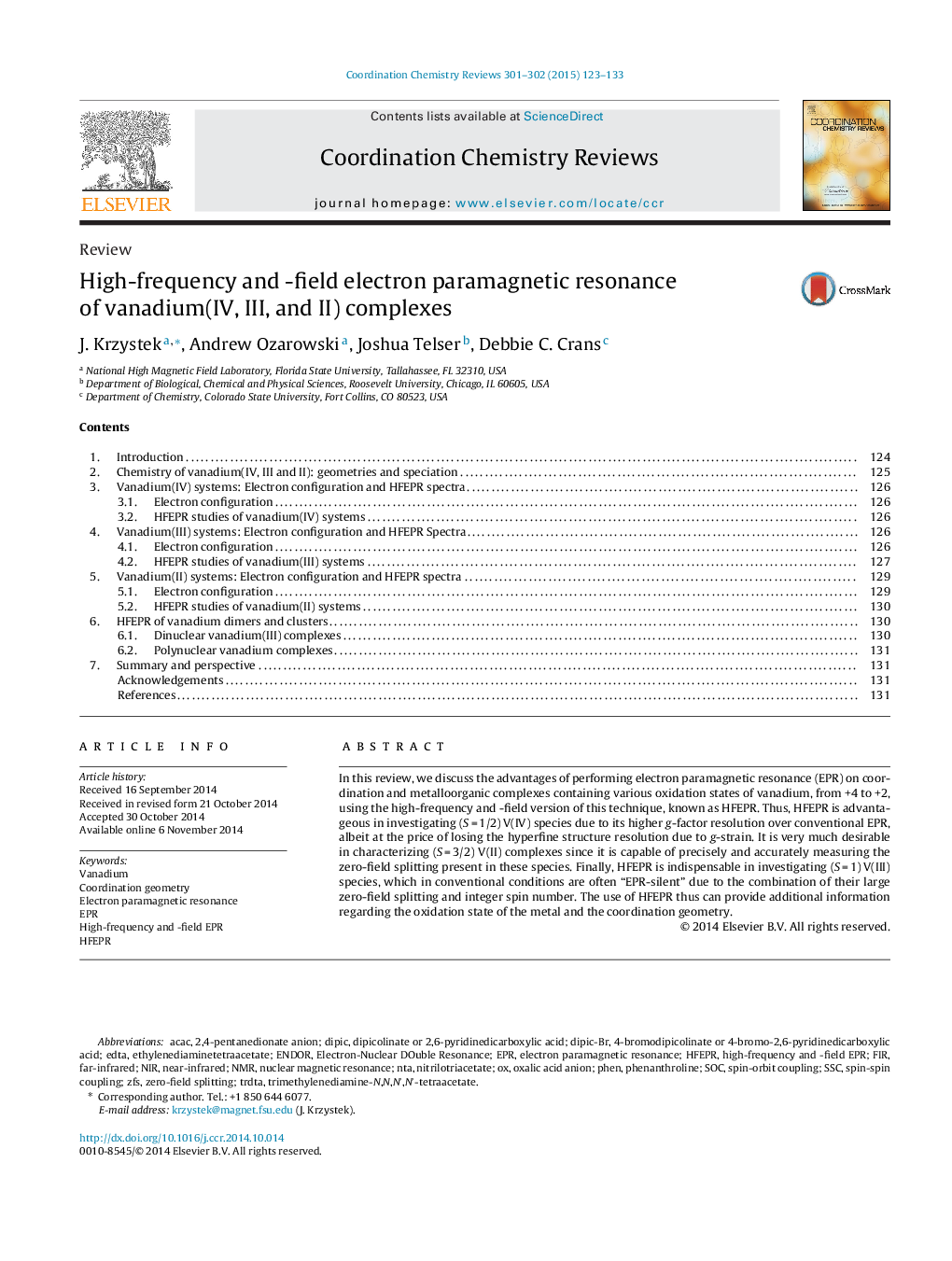| Article ID | Journal | Published Year | Pages | File Type |
|---|---|---|---|---|
| 1299675 | Coordination Chemistry Reviews | 2015 | 11 Pages |
Abstract
- Vanadium complexes have many roles in biology and medicinal chemistry in addition to their fundamental relevance to coordination chemistry.
- The paramagnetic oxidation states of vanadium, VII, VIII, and VIV can all be studied by electron paramagnetic resonance (EPR) spectroscopy, with EPR at conventional magnetic fields and resonant microwave frequencies best suited for VIV.
- High-frequency and -field EPR (HFEPR) is especially useful for VII and VIII systems both for qualitative identification and quantitative analysis.
- Di- and polynuclear vanadium systems, with multiple paramagnetic ions, can also be fruitfully studied by HFEPR.
- The spin Hamiltonian parameters, such as zero-field splitting (zfs) values D and E, obtained by HFEPR of SÂ >Â 1/2 vanadium-containing systems can be related to electronic structure.
Keywords
dipicENDORZFSNIRAcAcNTAFIRSSCnuclear magnetic resonanceSpin-orbit couplingEDTAethylenediaminetetraacetateNMRElectron paramagnetic resonanceEPRZero-field splittingSpin-spin couplingFar-InfraredElectron-Nuclear DOuble ResonanceSOCPhenanthrolinePhenNear-infraredNitrilotriacetateCoordination geometryVanadium
Related Topics
Physical Sciences and Engineering
Chemistry
Inorganic Chemistry
Authors
J. Krzystek, Andrew Ozarowski, Joshua Telser, Debbie C. Crans,
